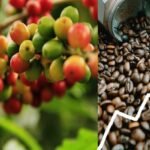Centre asked states to prepare for the “worst” due to moderate El Nino.
In the event of insufficient monsoon rainfall, the Centre asked its states to prepare for the “worst situation” and ensure sufficient seed supply for the kharif season. After the India Meteorological Department (IMD) confirmed that most global models predict a moderate El Nino during the monsoon season (June–September), which accounts for 72% of the country’s annual precipitation, the most recent advisory was issued.
El Nino
An El Nino is a naturally occurring climatic phenomenon that results in higher than usual sea surface temperatures in the eastern and central Pacific Oceans. This causes more rain to fall in central Asia, the Horn of Africa, southern South America, and the southern United States.
El Nio effect in India
El Nino can also result in mild winter weather over the Indian subcontinent and dry, inadequate monsoons in the summer. As a result, it has an impact on agriculture and creates a situation that is comparable to a draught. Crops including peanuts, maize, guar, castor, moong, tur, and a lot more endure extraordinarily under El Nino conditions.
Union Agriculture Secretary Manoj Ahuja stated that the weather department had forecast a normal monsoon and that El Nino conditions may develop during the monsoon season when he addressed the annual Kharif Campaign, which is held to prepare strategies for the upcoming season.
Also Read | IMD keeping careful eye on cyclonic circulation over North Andaman Sea
We ought to be ready for the worst-case scenario. There is a possibility of less precipitation and El Nino conditions will not prevail. State-level preparedness should be complete, he stated.
As indicated by IMD, the rainstorm will be “ordinary” (96% of the Significant stretch Normal) this year, and the following update will be given before the current month’s over. However, a monsoon that is “below normal” has been predicted by private weather forecaster Skymet (94% of LPA). Monsoon rainfall that is between 96% and 104% of the long-period average (LPA) of 868.6 mm is referred to as “normal,” while rainfall that is between 90% and 95% of the LPA is referred to as “below normal.”
Climate-resilient seeds are needed right away because farmers will need to resow the same or other short-lived crops or varieties all at once in the event of insufficient or delayed rainfall, so seeds are the most important component. Ahuja mentioned that States guarantee that there is satisfactory accessibility of seeds for the planting tasks and survey what is going on routinely all through the season.
He advocated for disseminating a single advisory to farmers for weather updates, highlighting the significance of climate-resilient seed varieties, which aid in yield maintenance in adverse weather conditions brought on by climate challenges.
Prior, to introducing the meeting, Agribusiness Clergyman Narendra Singh Tomar requested that States advance innovation in the ranch area to reduce input expenses, help creation, and increment ranchers’ pay. He stated that a profit guarantee is essential, and technology can assist in making farming profitable by lowering the cost of inputs and increasing production.
As farming is a State subject, he encouraged State legislatures to execute Focal projects and contribute reserves satisfactorily for improved results. In a portion of the ranch area plans like harvest protection, States are additionally expected to contribute half of the sponsorship trouble however their jobs are never recognized in the advancement of such plans.
Also Read | IMD, Japan & UNDP have unveiled a new project to expedite climate action in India
Tomar additionally mentioned that States advance nano composts, which have proactively been sent off on the lookout, as utilization of regular (granular) urea has not decreased in spite of the accessibility of option nano-urea and the reception of normal and natural cultivating rehearses.
The ministry reports that the country’s consumption of fertilizer increased by 1.6% to 585.43 lakh tonnes (lt) in 2022–23, up from 576.09 lt the previous year. Urea sales are up 5.3% to 356.75 lt, and DAP sales are up 14.1% to 105.19 lt from this. MoP consumption, on the other hand, decreased by 33.4% to 16.28 lt, while complex consumption decreased by 11.3% to 107.21 lt.


















Add Comment